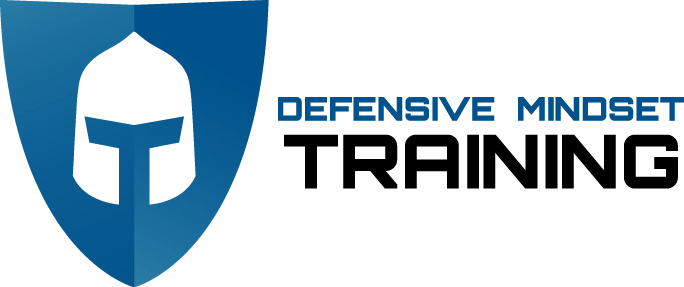The evolution of Concealed Carry
Beau Doboszenski, Owner/Lead Instructor
Originally published March 8th, 2018
For many people, getting their Permit to Carry a handgun is often the first and last professional training they take.
They somehow believe that a Permit to Carry confers special abilities or that it’s actually the destination. This is hardly the case.
In this week's Training Newsletter, I want to take you through the journey concealed carry should involve. Nothing I'm going to tell you is a secret, but not everyone learns this early in their training so you may have missed some crucial steps.
When you’re done reading, watch this video outlining the evolution of concealed carry training and test yourself on how many of the skills and DMT standards you can meet.
The Evolution of Concealed Carry
Most people will begin with getting the firearm, standing on the firing line, and shooting. A lot. But if you want to be successful for self-defense, there are many skills you need to master. Below are the steps you should work through to become fully capable.
1. Basic Shooting.
When I first started shooting handguns with a group of longtime friends I call my "Gun Friends," we could spend hours on the range, banging away. (In the 5 Secrets of Concealed Carry video, I explain why this probably wasn't a good idea.) Hundreds of rounds fired. Targets replaced several times over. Almost as much time laughing and joking as trigger pulling. The goal here, in addition to just having fun, is to be able to put accurate rounds down range. That's a good goal. At 20-30 feet, you should be able to fit 5 bullets into a space the size of a quarter.
2. Fast Shooting.
But slow accurate fire isn't the way self-defense works. It takes multiple shots on target accurately, and fast. With proper training and practice, at 21 feet you should be able to get 3 rounds inside a 6" circle while running .25 splits between shots – or in DMT lingo, "combat shooting speed."
3. Drawing.
So far, the firearm has been "out” – you didn't have to deploy the handgun from a concealed holster before shooting. The skill of drawing and presenting the firearm is a whole different animal. I actually know of several Permit to Carry instructors who have certified thousands of people, but who have never drawn their handguns with live ammo before. Should make you want to know whose teaching your class!
Since we know that defensive encounters often happen within close proximity, the draw standard from full concealment for the Foundations Class at DMT is 3 shots in a 6 inch circle, at a 21 foot target in under 4 seconds. For the Advanced Class, it's under 2.5 seconds. For my top end DMT Warriors, under 2 seconds.
4. Reloads and Malfunctions.
As Murphy's law states: "Anything that can go wrong, will go wrong." So what if your handgun stops working when your life depends on it? There are three main stoppages that you need to train for: Emergency Reloads, Soft Malfunctions, and Hard Malfunctions.
An Emergency Reload is when the firearm empties. You remove the magazine currently in the firearm and replace it with a fresh one as fast as possible because a threat is still trying to kill you. The DMT Foundations standard from full concealment draw is 3 shots in a 6 inch circle on a 21 foot target with an unknown Emergency Reload, completed in 7 to 9 seconds.
A Soft Malfunction happens when the round fails to go off when the trigger is pulled, giving the sound of "click" instead of "bang." With this stoppage, the slide must be quickly cycled to clear out the malfunctioned round. The DMT Foundations standard from full concealment draw is 3 shots in a 6 inch circle on a 21 foot target with an unknown Soft Malfunction in 4 to 5 seconds.
A Hard Malfunction is when the firearm has completely stopped functioning due to a blockage in the chamber and the top of the magazine. Often the magazine itself is what is causing the problem, and must be discarded and replaced with a fresh one. This whole process, involving multiple steps, has a DMT Foundations standard from full concealment draw of 3 shots in a 6 inch circle on a 21 foot target with an unknown Hard Malfunction in 9 to 11 seconds.
5. Advanced Techniques.
The above might seem like a lot, but really, those are just the foundational skills. DMT students can’t advance out of Foundations classes until they can meet these standards. Moving beyond these basics, you’ll still want to add: Retention at varying distance of threat, Primary Hand Only or Support Hand Only operation of the firearm, Low Light Techniques, Deterrence procedures, empty hands and edged weapon combatives, movement, weapon strikes and grab retention techniques, utilizing cover and concealment, and multiple targets and transitions.
6. Advanced Tactics.
More challenging still is that all of the skills listed in the previous paragraph are "techniques," which means these actions must be accomplished unconsciously under threat stimulus. We haven't even begun to now crack the surface of "tactics," which is when, why, and to whom we should deploy those techniques! The whole picture is massive, and clearly a Permit to Carry is just one small part of the responsibility we have in carrying this firearm.
Watch this short video where I demonstrate these techniques, to DMT-standard performance. If you can't do all the skills you see, unconsciously, think about signing up for a DMT class, seminar, or private training session, or spending more time with the Concealed Carry Masters Course video series.
Or practice at home using a SIRT for dry-fire practice to get in thousands of reps without ever leaving your house. To purchase, visit nextleveltraining.com and use promo code defenders for a 15% discount.
